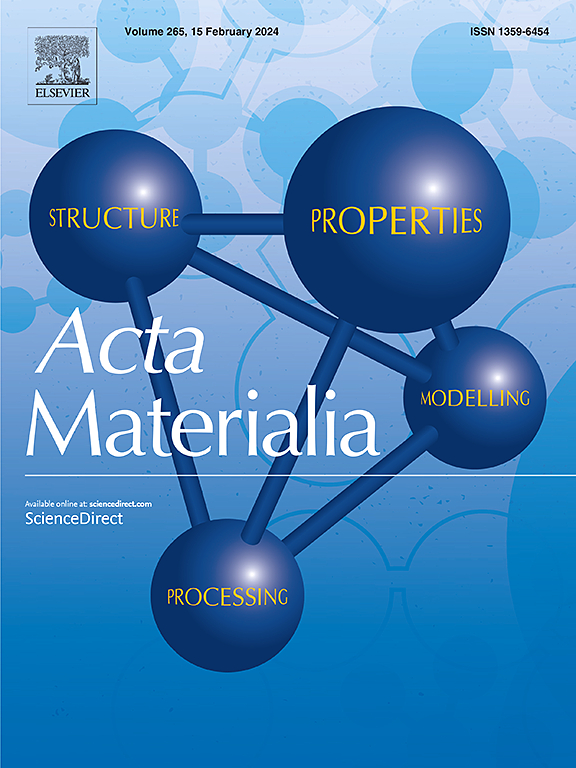微观和中观结构对激光粉末床熔融制造 AlSi10Mg 中疲劳裂纹生长的影响
IF 8.3
1区 材料科学
Q1 MATERIALS SCIENCE, MULTIDISCIPLINARY
引用次数: 0
摘要
在增材制造的材料中,疲劳裂纹的扩展经常受到气孔或缺乏熔合等缺陷的影响,为了控制气孔的形成并将其对疲劳寿命的影响降到最低,人们进行了大量的研究。然而,工艺参数对疲劳性能的影响在很大程度上被忽视了。本研究评估了层厚、舱口间距、扫描策略和基板预热对激光粉末床熔合(LPBF)制备AlSi10Mg的疲劳阈值和裂纹扩展速率的影响,并在两个正交方向上进行了测试。采用了5种不同的LPBF工艺参数,并将其微观和细观组织特征与疲劳裂纹扩展(FCG)行为进行了关联。结果表明,舱口间距和底板预热对FCG速率的影响比对层厚和扫描策略的影响更大。在所有参数集中,阈值区域主要由凝固细胞控制,这些细胞作为短裂纹扩展的屏障。当循环塑性区尺寸接近晶胞尺寸时,稳态裂纹扩展开始。在Paris状态下,当塑性区尺寸接近熔池细观结构尺度时,较小的舱口间距引起裂纹扩展曲线斜率的明显变化。在LPBF过程中对底板进行预热对疲劳阈值和Paris状态都有影响。各向异性发现在阈值和巴黎制度是最小的。然而,在快速裂纹扩展区观察到大量的各向异性,这是由裂纹沿熔池边界扩展引起的。本文章由计算机程序翻译,如有差异,请以英文原文为准。


Impact of micro and mesostructure on the fatigue crack growth in laser powder bed fusion fabricated AlSi10Mg
Fatigue crack propagation in additive manufactured materials is often impacted by defects such as pores or lack of fusion and extensive research has been conducted to control pore formation and minimize their effect on fatigue life. The impact of process parameters on fatigue properties, however, has largely been overlooked. This study evaluates the effects of layer thickness, hatch spacing, scan strategy, and baseplate preheating on both the fatigue threshold and crack growth rates of laser powder bed fusion (LPBF) fabricated AlSi10Mg, tested in two orthogonal orientations. Five different LPBF process parameter sets were used and the resulting micro and mesostructure characteristics were correlated with the fatigue crack growth (FCG) behavior. Results indicate that the FCG rates are significantly more influenced by hatch spacing and baseplate preheating than layer thickness and scan strategy. Across all parameter sets, the threshold region is governed primarily by the solidification cells, with the cells acting as barriers to short-crack propagation. Steady state crack growth initiates when the cyclic plastic zone size approaches the cell size. In the Paris regime, smaller hatch spacing induces a distinct change in the slope of the crack growth curve as the plastic zone size approaches the melt pool mesostructure scale. Preheating the baseplate during LPBF impacts both the fatigue threshold and the Paris regime. Anisotropy was found to be minimal in both the threshold and Paris regimes. However, substantial anisotropy is observed in the fast crack growth regime, which is caused by the crack growth along the melt pool boundaries.
求助全文
通过发布文献求助,成功后即可免费获取论文全文。
去求助
来源期刊

Acta Materialia
工程技术-材料科学:综合
CiteScore
16.10
自引率
8.50%
发文量
801
审稿时长
53 days
期刊介绍:
Acta Materialia serves as a platform for publishing full-length, original papers and commissioned overviews that contribute to a profound understanding of the correlation between the processing, structure, and properties of inorganic materials. The journal seeks papers with high impact potential or those that significantly propel the field forward. The scope includes the atomic and molecular arrangements, chemical and electronic structures, and microstructure of materials, focusing on their mechanical or functional behavior across all length scales, including nanostructures.
 求助内容:
求助内容: 应助结果提醒方式:
应助结果提醒方式:


